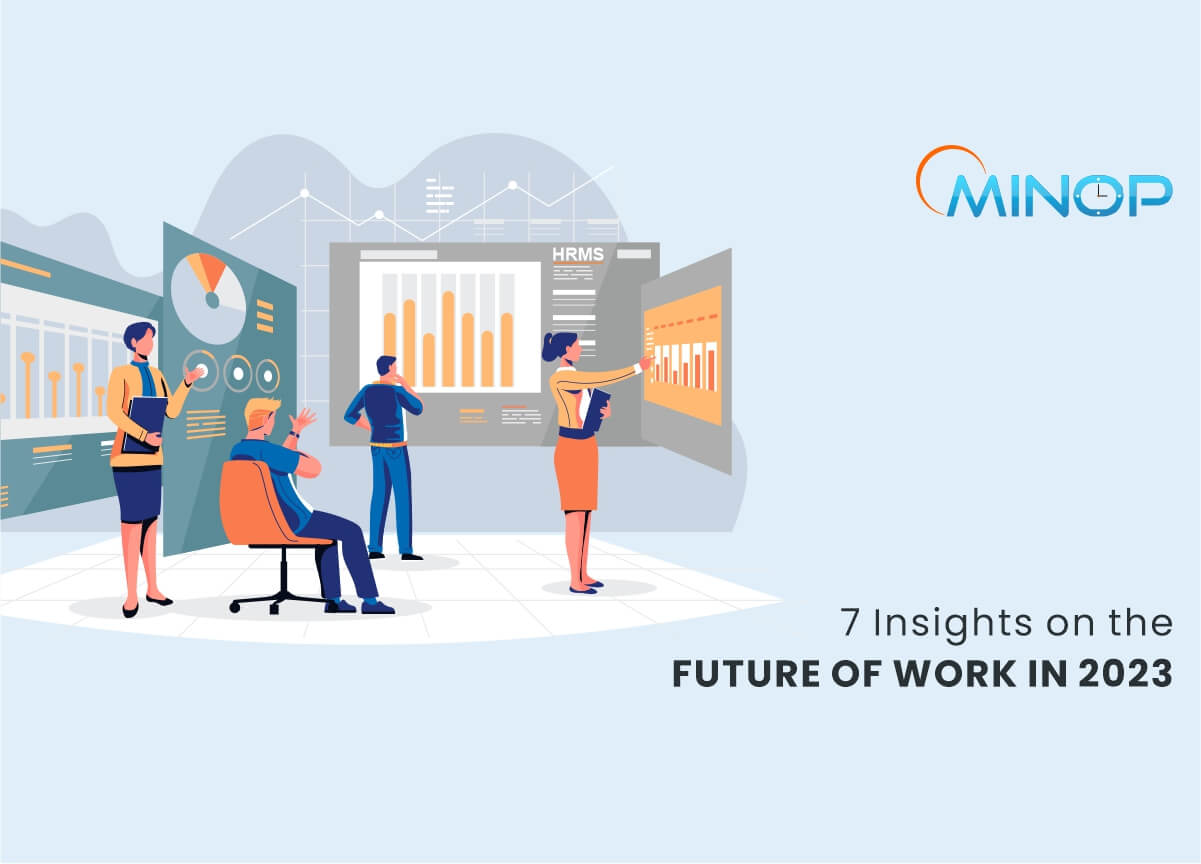7 Insights on the Future of Work in 2023 that changes HRMS forever
Posted On:- 04 May, 2023 By:- Sivaranjith Sivaraman
The future of work is continuously changing, and as we approach 2023, it is critical to stay current on the newest trends and projections. We will give you significant insights into what to expect in the future of work, including the impact of technology, changing work environments, and the evolving workforce, in this post. We hope the following information will be useful for your organization's HRMS in adapting new technology to remain competitive in the future.
1.Remote work is here to stay
The COVID-19 pandemic has forced companies to adopt remote work policies, and this trend will likely continue in 2023. As technology continues to improve, more companies are realizing that they can operate successfully with a remote workforce. This will lead to a shift in how companies approach hiring and managing their employees.
Remote and hybrid working will have a great effect on adapting attendance trackers and payroll software. The devices we selected should work seamlessly with hybrid working environments.
2. Increased use of automation
Automation has been a buzzword for many years, but it will become much more common in the workplace in 2023. Businesses will continue to automate operations, allowing their employees to focus on higher-value jobs. Payroll software, attendance trackers, and mobile apps, in particular, will ease HR work and allow them to focus more on employee well-being and engagement efforts.
3. AI-powered hiring
In 2023, the use of artificial intelligence (AI) in the hiring process will become more common. This technology can assist businesses in identifying the best candidates for a position based on their skills and expertise. AI applications and HR software will help HR to implement a smooth onboarding process.
Furthermore, there are a lot of identity management tools powered by AI on the market right now. By combining these capabilities with a strong HRMS, HR can more easily onboard qualified individuals.
4. The rise of gig work
The gig economy has been steadily growing over the past few years, and it is expected to continue to do so in 2023. As more people look for flexibility in their work schedules, companies are offering more opportunities for freelance and contract work. This will provide individuals with more control over their work-life balance, but it also means that HRMS will need to adapt to this new way of working.
5. Increased focus on employee wellness
The pandemic has highlighted the significance of employee well-being, and in 2023 this trend will persist. Employers will need to give their employees' physical and mental health priority by offering wellness initiatives, flexible work hours, and other resources to promote their well-being. In 2023 and beyond, the HR software will evolve more to strengthen such activities. These programs will connect workers who are based in different locations, and HR can start conversations by using integrated chat platforms with HR software.
6. The changing office environment
As remote work becomes more prevalent, the traditional office environment will need to adapt. Companies will need to create more flexible and collaborative workspaces, that can accommodate both remote and in-person workers.
7. The rise of the hybrid workforce
The hybrid workforce, consisting of both remote and in-person workers, will become more common in 2023. This will require companies to adopt new communication tools and strategies, to ensure that all employees feel connected and engaged.
This new workforce needs to be tracked for their productivity and attendance while they are working from home or the office. Small to the big business need to adapt HRMS software to track employee performance and attendance.
Conclusion:
Hope we have given you an overview of the future of HRMS, and how it is going to change according to the new trends in work. Especially working from the home and hybrid workforce is going to compel companies to revamp their HRMS for the future.

Comments